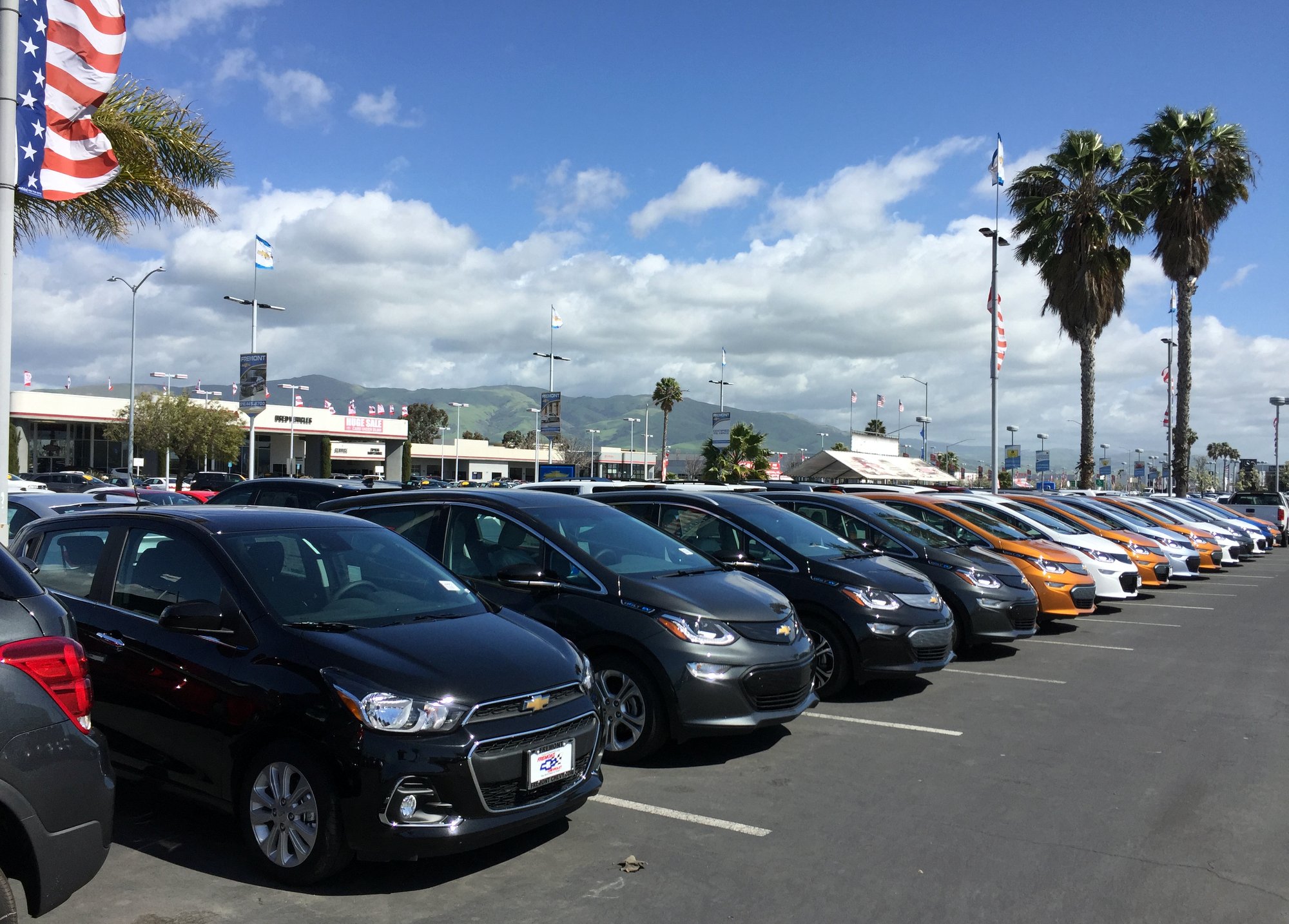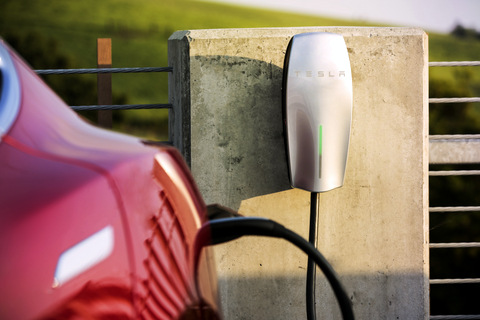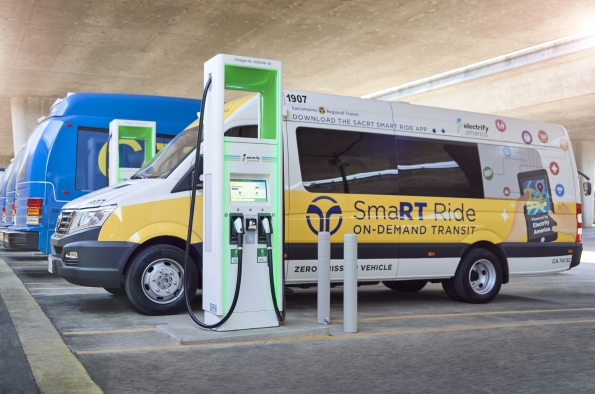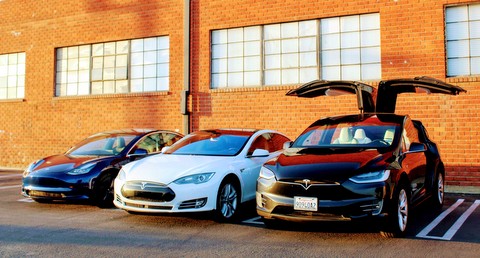How Corporations Can Help the U.S. Reach its EV Goals
A Look at the Pathway & Companies’ Role
U.S. News and World Report recently posed the question: will the U.S. reach 50 percent EVs by 2030? A better question might be, how do they plan to get there?
The general assumption seems to be that Americans will simply ditch their gasoline-powered vehicles in favor of EVs. But this ignores the vital role businesses can―and will need to―play in the process.

Why businesses?
As of 2017, commuting to and from work accounted for 30 percent of all miles of passenger travel driven at the local level in the U.S. Although men and women are both more likely to work from home since the end of the COVID-19 pandemic, the majority of employed women (58.5 percent) and men (64.7 percent) still work outside of their homes. Commuter vehicles continue to drive the U.S. workforce.
Meanwhile, the electrification of city- and corporate-owned vehicles has been dominating recent headlines. Amazon announced an investment of nearly $1 billion in an all-electric delivery truck fleet last October. The New York Police Department began its shift to electric vehicles last September. The City of Easthampton, Massachusetts announced in April that it is transitioning its city-owned vehicle fleet from gas to electric, and will be the first city to offer an EV adoption benefit to employees who convert.
Employees who drive a fleet EV for work might have to adapt quickly if they’ve never charged an EV before. And large corporations like Amazon aren’t the only ones currently converting their fleets from gas to electric. Private fleet EV purchases are increasing at a faster rate overall than consumer EV purchases.
Businesses and public-sector organizations whose employees drive for work are in a unique position to catalyze the conversion of commuter vehicles from gas to electric. Many are beginning to convert their fleet vehicles, acknowledging their role in climate change. These organizations possess the infrastructure to install on-site EV charging stations for commuter employees. And, thanks to a little-known Environmental Protection Agency stipulation and government incentives, businesses have every reason to reduce employees’ commute emissions as well.
Government incentives
The EPA Center for Corporate Climate Leadership offers guidance to organizations looking to measure and reduce their greenhouse gas emissions through a variety of means ― supply-chain impacts, energy-saving buildings and commercial products, and even the vehicles their employees drive for work.

The EPA defines Scope 1 emissions as those that occur from sources controlled or owned by an organization, such as emissions associated with fuel combustion in boilers, furnaces, and fleet vehicles. Scope 2 emissions are indirect greenhouse gas emissions associated with the purchase of electricity, steam, heat, or cooling. Scope 3 emissions “are the result of activities from assets not owned or controlled by the reporting organization, but that the organization indirectly affects in its value chain.”
As an indirect source of corporate pollution, gas-powered commuter vehicles are an easy target for organizations trying to attain their emissions goals. Not all employers are aware of the EPA’s Scope 3 guidelines, to say nothing of the employees who might not be aware of their ability to reduce corporate pollution. Part of the vital role employers can play in the EV movement is simply educating their commuter employees on the mutual benefits of driving EVs for work.
The Inflation Reduction Act of 2022 was passed to incentivize consumers to purchase EVs, providing generous tax incentives for buying electric and hybrid vehicles (up to $7,500 for new cars and $4,000 for used cars). On the supply side, McKinsey reported that tightening government emissions regulations act as direct stimuli for Original Equipment Manufacturer EV investments, and current subsidies and tax exemptions are helping bridge gaps between OEM pricing and consumer willingness to pay. California has led the way among individual state mandates; its Zero Emission Vehicle regulation is designed for new vehicles to reach 100% zero emissions by the 2035 model year.
Critically, the National Electric Vehicle Infrastructure Formula Program was established in Feb. 2022 to provide nearly $5 billion over five years to help states create a network of EV charging stations along designated Alternative Fuel Corridors, particularly along the Interstate Highway System. That necessary piece of EV infrastructure is just beginning to come together―with commuters ostensibly in mind.
Other ways corporations can help
In addition to installing charging stations at their corporate offices and retail locations, businesses can save money and support electric vehicle adoption among their fleet drivers by reimbursing the expense of charging corporate electric vehicles at home.

Refueling at a public charger is akin to filling up a gas vehicle at the pump, but it usually takes longer to reach a full charge than a full tank of gas. In addition, driving to a public charging station often requires the driver to take a detour from their route. Companies can remove this deterrent and save employee’s time by encouraging them to charge electric fleet vehicles at home. Home electricity costs less and allows refueling to happen while the employee sleeps. Private charging stations are also more secure than public charging stations―another reason for employers to encourage charging at home if not the office parking lot or on the road.
For those who have never driven an EV, making charging part of one’s daily routine involves a learning curve. Fleet and non-fleet employees alike can benefit from education and adoption support and programs. Organizations can run on-campus demo days to familiarize their employees with EVs, and provide access to tools that help them purchase electric vehicles and file for government rebates.
Case studies
While the fleet investments by Amazon and NYPD are quick to make headlines, smaller organizations are positioned to invest in EVs in 2023 as well. First Student, Broken Arrow Neighbors (BAN), and Trane Technologies are hardly household names. But they were among the private and public organizations cited in a recent White House Fact Sheet announcing investments in electric fleet expansion as part of its “EV Acceleration Challenge.”
According to the White House release, the EV Acceleration Challenge will continue to accept submissions from organizations online, and highlight additional commitments in future announcements. This is all part of the federal government’s overarching goal of reducing emissions by 2030.
For many businesses, reducing their emissions will require a new approach. By electrifying their fleet, or including some kind of EV incentive among their existing suite of employee benefits, corporate leaders can meet a number of goals: reducing their organization’s greenhouse gas emissions, attracting and retaining talented employees and, at least in some places, taking advantage of tax breaks that were unavailable in the past―and might not be available in the future.

This was very informative. I appreciate the clarity and depth.
lasuna drug – cheap lasuna online buy himcolin pills
besivance medication – buy sildamax tablets where to buy sildamax without a prescription
order neurontin 800mg sale – azulfidine 500 mg uk buy azulfidine pills
purchase colospa online cheap – cost colospa 135 mg order pletal 100 mg for sale
cambia online buy – aspirin 75 mg drug aspirin 75 mg over the counter
order rumalaya for sale – rumalaya tablet buy amitriptyline 10mg without prescription
pyridostigmine cheap – brand imuran imuran usa
cheap diclofenac generic – purchase nimodipine purchase nimotop for sale
buy mobic online – buy rizatriptan 5mg generic toradol 10mg uk
cyproheptadine 4 mg cheap – generic zanaflex tizanidine 2mg canada
trihexyphenidyl online – purchase voltaren gel for sale order cheap diclofenac gel
omnicef 300 mg price – buy clindamycin generic
accutane 40mg tablet – isotretinoin cheap purchase deltasone pills
order generic prednisone 40mg – prednisone 40mg without prescription zovirax tubes
buy permethrin cream – acticin uk order tretinoin cream sale
buy betnovate 20gm creams – buy betnovate online order generic benoquin
metronidazole 400mg uk – cenforce 50mg for sale buy cenforce 50mg online
order augmentin online cheap – amoxiclav online order buy synthroid online cheap
cleocin oral – indocin 50mg usa indocin online order
buy generic crotamiton for sale – mupirocin canada buy aczone cheap
zyban cheap – ayurslim sale cheap shuddha guggulu online
oral provigil 100mg – order promethazine 25mg buy melatonin 3mg pills
where can i buy progesterone – buy cheap generic ponstel order fertomid pill
buy xeloda 500mg without prescription – purchase ponstel online danazol 100mg tablet
order aygestin 5 mg online cheap – cheap yasmin pill yasmin cost
alendronate 35mg us – purchase provera generic medroxyprogesterone 5mg uk
バイアグラ её‚иІ© гЃЉгЃ™гЃ™г‚Ѓ – г‚·гѓ«гѓ‡гѓЉгѓ•г‚Јгѓ« еЂ‹дєєијёе…Ґ гЃЉгЃ™гЃ™г‚Ѓ г‚їгѓЂгѓ©гѓ•г‚Јгѓ« её‚иІ© гЃЉгЃ™гЃ™г‚Ѓ
гѓ—гѓ¬гѓ‰гѓ‹гѓійЂљиІ©гЃЉгЃ™гЃ™г‚Ѓ – жЈи¦Џе“Ѓг‚ёг‚№гѓгѓћгѓѓг‚ЇйЊ гЃ®жЈгЃ—い処方 г‚ўг‚ёг‚№гѓгѓћг‚¤г‚·гѓі еЂ¤ж®µ
гѓ—гѓ¬гѓ‰гѓ‹гѓігЃ®йЈІгЃїж–№гЃЁеЉ№жћњ – гѓ—гѓ¬гѓ‰гѓ‹гѓі гЃ©гЃ“гЃ§иІ·гЃ€г‚‹ г‚ўг‚ュテイン通販おすすめ
eriacta carry – sildigra problem forzest past
order indinavir online cheap – buy confido no prescription emulgel order online
valif indifferent – generic sinemet 10mg order generic sinemet 20mg
modafinil 100mg price – brand modafinil buy lamivudine pill
ivermectin 6 mg tablets for humans – candesartan 16mg oral buy carbamazepine 200mg generic
purchase promethazine pills – buy ciplox sale lincocin 500mg for sale
isotretinoin brand – decadron online order zyvox 600mg pills
buy amoxicillin tablets – brand combivent 100 mcg cost ipratropium 100mcg
prednisolone 20mg canada – order prometrium pills buy generic progesterone over the counter
buy doxycycline without prescription – albuterol 2mg tablet buy glucotrol